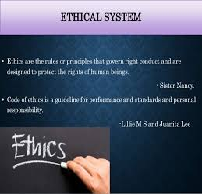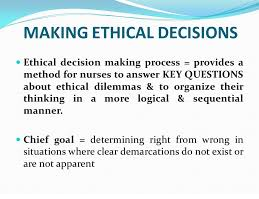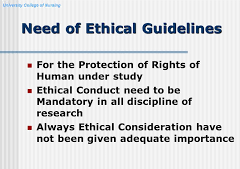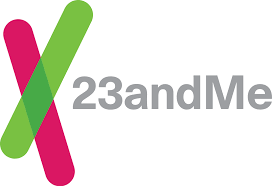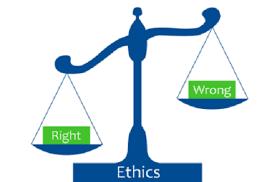The Behavior Challenges and Intellectual Disability Order Instructions: The guided word limit is 4000 words (but you are not limited in your research)

The Behavior Challenges and Intellectual Disability Sample Answer
Table of Contents
Unit 6: Research Project 3
1.0 Introduction. 3
1.1 Research Question. 4
1.2 Research Objectives. 4
1.3 Hypothesis. 4
2.0 What is challenging behavior?. 5
2.1 Impact of challenging behavior 6
2.1.1 Aggression and assault 6
2.1.2 Stress. 7
2.1.3 Burnout and well-being. 8
2.2 Challenging Behaviors. 10
2.2.1 Learning disabilities. 10
2.2.2 Dementia. 11
2.2.3 Autism and Autism spectrum disorder 12
2.2.4 Opposition Defiant Disorder ODD.. 13
2.2.5 Conduct disorder (CD) 14
3.0 Research methodology. 14
3.1 Sampling. 15
3.2 Reliability and validity. 16
3.3 Grant chart 16
4.0 Results. 18
4.1 Challenging behaviors at Public Health England. 18
Table 1. Common challenging behaviors Public Health England. 18
Table 2: Influence of Challenging Behaviors on the Efficacy of Social Workers. 19
Table 3: Showing whether challenging behaviors affect or motivate performance. 20
5.0 Interpretation of the Results. 21
5.1 Present outcomes. 22
6.0 Conclusion. 22
7.0 References. 23
8.0 Appendix 25
8.1 Appendix 1. Questionnaires. 25
About 1 percent of the entire population has intellectual disability, which is a considerable disorder in adaptive as well as intellectual function in the early stages of development (Aveyard 2014). Individuals with the intellectual disabilities rate of developing mental illness are greater in comparison to the whole population, however, challenges in communication, access to services, literacy means that mental issues in persons with intellectual disability are inadequately recorded. Moreover, the majority of persons with intellectual disability exhibit challenging behaviors, meaning characters of intensity, duration, and frequency that endangers their physical safety or those around them or even restricts accessing community services.
For a long period, there have been concerns that psychotropic medicine especially, antipsychotics are overused as such prescribed for problem behavior instead of diagnosing mental sickness, regardless of insufficient proof on their effectiveness. Nonetheless, getting an accurate amount of psychotropic in persons with learning disabilities is intricate, while the present literature is limited due to varying descriptions. In spite of inadequate proof from policy context, there is no detailed assessment of psychotropic in adults with learning disability in United Kingdom primary care conducted, while results from other nations cannot be generalized due to variations in health care provisions as well as practices (Guerzoni & Zuleeg 2011). Proof demonstrates that psychotropic use in the entire population has been increasing tremendously for the past years, however, few studies have investigated that the patterns used to prescribe psychotropic among persons with intellectual disability. Regarding deinstitutionalization, creating warrens of psychotropic use, adverse effects and efforts to minimize its use to individuals with learning disability through the implementation of prescription standards are not clear. Furthermore, with the large as well as representative sample size, it is apparent that there are increased rates of mental illness, challenging behavior and psychotropic medicine among people with intellectual disability.
1.1 The Behavior Challenges and Intellectual Disability Research Question
Do challenging behaviors among persons with learning disabilities result from mental impairments?
- Are social workers faced with challenges caring for persons with learning disabilities?
1.2 The Behavior Challenges and Intellectual Disability Research Objectives
To establish whether or not challenging behaviors among persons with learning disabilities result from mental impairments
- To understand some of the challenges that come with caring for persons with learning disabilities
1.3 The Behavior Challenges and Intellectual Disability Hypothesis
H0: Challenging behaviors among persons with learning disabilities do not result from mental impairments
- H1: Challenging behaviors among persons with learning disabilities do not result from mental impairments
- H0: Social workers caring for persons with learning disabilities do not undergo challenges that wear them down
- H1: Social workers caring for persons with learning disabilities undergo challenges that wear them down
2.0 The Behavior Challenges and Intellectual Disability and What is challenging behavior?
An individual’s conduct may be regarded as challenging if it threatens their safety or those around, particularly care or even contributes poor life quality. In addition, such behaviors can influence their capacity to participate in routine activities. Challenging behaviors consist of self-harm, destructiveness, and aggression among others. Communication determines the way in which people express their needs. In the event that communication is problematic, it may extremely discourage individuals leading to challenging behavior. If such behavior contributes to desire results, it may be repeated over and over. Challenging behaviors are common in persons with problems that impact communication and the brain including learning disability, and dementia (Economist Intelligence Unit 2011).
Challenging behavior or behaviors that challenge are culturally anomalous behaviors of frequency or duration that endangers their safety or others. In most cases, an individual must display trends that are a threat to services for a significant timeframe. Seriously challenging behaviors are not transient occurrences. According to the National Institute for Health and Care Excellence (NICE), challenging behavior is a concept that is associated with aggression, stereotype, and agitation or self-harm, withdrawal, and sexual misconduct (NICE 2016). Additionally, challenging behavior involves persons whose conduct present considerable challenges to services. This comprises of behaviors that are associated with mental health issues. Challenging behaviors are widely used among persons with learning or intellectual disability, in addition to those with autism. Nonetheless, there are other groups that can be regarded to have challenging behaviors such as those with dementia and serious mental issues.
2.1 The Behavior Challenges and Intellectual Disability and the Impact of challenging behavior
Challenging behavior is described as ‘socially unacceptable behavior’, ‘bad behavior’ (Craver 2015). The term also reflects a challenge to those concerned. It indicates that something is not working well, and it needs to be rectified and stopped. Behavior is challenging if it causes harm to another individual, or prevents them from fulfilling certain things in their lives. Challenging behaviors are detrimental to the lives of the affected persons and those around them. Hence, dealing with challenging behaviors requires careful handling in a way that supports the safety and well-being of people and others
2.1.1 The Behavior Challenges and Intellectual Disability and Aggression and assault
In a study conducted by 76 social care workers in institutions that provide intellectual disability services, three-quarter of respondents had faced aggression, self-harm, and disruptive behavior. Recent studies of employees working with persons with dementia discovered that roughly three-quarter of workers faced fearful events during their work (Springer et al. 2013). The most common reported cause was physical assault. Among the respondents sampled, a fifth said they had been injured, a quarter experienced fears during an interaction, and half of the interviewees stated that they adopted a more personal centered style while others learned to be more vigilant.
This study gives indications of nature and level challenging behavior experienced by staff in care homes for people with dementia. Recent studies of perception of severe behavior and fear of assault showed that the degree of fear was greater when staff was exposed to challenging behavior. Researchers, however, found unclear evidence for the relationship between the quantity of challenging behavior and the level of fear of assault.
In a survey of staff in regular care units with a high prevalence of hostility and a study of officials in two community settings with a minimum occurrence of cruelty for people with intellectual disabilities, staff reported significantly lower fear for aggression and a high self-efficacy compared to a city team (Emerson, 2011). Self-efficacy was defined as the ability of an individual to handle aggressive conduct (Craver, 2015). Persons susceptible to fear to prefer working with the less difficult group.
In another study done to determine the extent of risky behavior, 48% of the respondents and 93% of the care group had cared for clients who had a history of contact with criminal justice service (Neale, 2008). They also found remarkable differences between private care providers and charitable care providers. Private sector homes had a high prevalence of clients who had been arrested by the police and of customers who had been sanctioned under mental health, yet they had less security provision than voluntary sector homes (Springer et al. 2013).
The authors further found out that care providers lacked background knowledge of the offenders under their care. This indicated the importance of information exchange while safeguarding against risks and susceptibility for criminals and prospective victims. It also highlighted the need and the importance of doing a background check on an individual before admitting them for care.
2.1.2 The Behavior Challenges and Intellectual Disability and Stress
Pressure is defined as the result of interactions between the environment and individual (Riekert et al. 2013). It is the body’s way of reacting to any demand or threat. When one feels at risk, the nervous system releases stress hormones which prepare the body for emergency action. This is further explained regarding demands placed on the person and their ability to cope. Staff stress and burnouts are major areas that affect staff well-being and their interactions with clients. In a study done to determine the relationship between challenging behavior and stress with employees working with persons with intellectual disabilities, it was found that there was an association between challenging behavior and staff stress (Emerson, McGill & Mansell, 2013). Attributes such as emotions, coping, self-efficacy influenced the relationship between organizational issues and personality.
The study further found out that challenging behavior is stressful for staff. Elevated stress levels and modest exhaustion were reported. This, however, did not relate to thoughts and feelings regarding challenging behaviors. The authors concluded that there was a slight indication to suggest that stress is the primary determinant of the social worker’s responses regarding acknowledgment (Emerson et al. 2013).
2.1.3 The Behavior Challenges and Intellectual Disability and Burnout and well-being
Burnout is the feeling of emotional exhaustion. It refers to the tendency of distancing oneself emotionally and mentally from others and reduced feelings of individual accomplishments (Hayes & Watson, 2013). Through various studies, there was evidence of an association between challenging behavior and staff burnout. In a survey of 77 workers, it was found that the higher the level of difficult behavior, the higher the level of fear for an attack. Increased burnout was significantly related to greater exposure to physical violence and reduced staffs support (Craver 2015).
In another study, self-efficacy was found to have a significant relationship between levels of aggression and burnout. Another study found the evidence of a relationship between staff burnout, intellectual disabilities, and challenging behavior (Hayes & Watson 2013). A survey of 103 staff in community residential homes for individuals with intelligent incapacities and perplexing behavior indicated that the more the team found their clients to be actively challenged, the more they experienced the emotional problem and exhausted and felt less accomplished (Hayes & Watson 2013). The study further found no relationship between psychological well-being and challenging behavior.
The positive correlation between negative emotional reactions and challenging behavior regarding nervous depression and exhaustion was also found to exist. A study done by care staff in five-day centers across one city found a noteworthy relation between self-reported well-being and staff rating of challenging behavior in both of those who cared for people with down syndromes and dementia and those who cared for non-specified learning disabilities.
Well-being declined as challenging behaviors increased: however, there were no relations between anxiety scores. Other studies have shown that stress and burnout are associated with the intention to leave an organization, absenteeism, and staff turnover (Parahoo, 2006). In a review done on 15 studies, there is no support for the opinion that the presence of challenging behavior in persons with learning disabilities is predictive of burnout. However great the exhaustion level
The report does not sufficiently bring out the conclusion of the relationship between these variables. Following the study, organizational variables were found to be reliable predictors of burnout among social care workers. Their study indicated that burnout is linked to issues of service delivery and employee support, rather than the presence of challenging behavior in people with learning disabilities.
Addressing challenging behaviors requires consistency, calm response, offering alternative choices to the affected, changing the setting, avoiding things that can surprise the affected individual, having fun and loving the affected person (Parahoo, 2006). According to them, good care and appreciation are important to encourage and give them hope. Care providers should be careful when dealing with challenging behaviors; they should conduct thorough background checks so that they are well prepared to handle the individual well.
2.2 The Behavior Challenges and Intellectual Disability and Challenging Behaviors
Many of the articles have reviewed previous research on the predominance of thought-provoking behavior among persons with learning disabilities. According to NICE (2015), prevalence rates of challenging behavior among people with intellectual disabilities is between 10-15%. It is clear that there are wide variations in the estimates of the prevalence of challenging behavior which probably reflects differences in definition and perceptions. Emerson (2011) outlines that between 5 to 15% of individuals with learning disabilities exhibit behaviors, which pose a big challenge for their guardians. Some of the challenging behaviors, among persons with learning disability show, are aggression, self-injury or property destruction, and undesirable sexual behaviors. In addition, Emerson (2015) argues that people with severe learning disabilities exhibit some additional syndromes such as communication disorders as well as sensory impairments.
Research studies demonstrate that the majority of this group of people demonstrates challenging behaviors. Additional findings indicate that learning disabilities are caused by the brain development process. However, according to the national center for learning disability (2012), other factors that affect fetus developing, such as the use of alcohol or drugs can also lead to the development learning disability. In addition, environmental factors during infancy stage such as exposure to toxins, paints, and poor nutrition can also cause learning disabilities. Furthermore, children lack the necessary support y to promote the development of intellectual capacity in their early ages may have difficulties at school.
According to NICE (2016), dementia is yet another symptom exhibited by people with challenging behaviors. Dementia is a general medical term that refers to a variety of symptoms which results from memory decline, or other sensory impairments, which might be severe enough to affect a person’s ability to carry out daily duties. NHS (2016), outlines that people with dementia may become apathetic and develop disinterest in their daily activities such as socializing. They have challenges with controlling emotions and change in personality aspects. This group of people has challenges with,
- Their memory
- Language and communication abilities
- Focusing on and paying attention
- Ability to make rational decision and judgment
- Visual perceptions
According to the study by the Alzheimer Society (2016), approximately 800,000 individuals in the UK live with dementia. Moreover, the same society highlights that a third of people with the age of 65 and above develop dementia, with two-thirds of them being women. It is argued that the rate of people with dementia has increased because of the increase in people’s life-span. Future predictions indicate that the number of people suffering from dementia in the UK is expected to reach one million by 2021. A study was carried out by NHS (2011) to examine the impacts of dementia on the mental abilities of people living in their homes or away from homes. The criteria of Randomized controlled trials (RCTs) were adopted involving 18 trials.The analysis of the outcomes established that dementia has a big impact on the mental abilities of the affected people. 16 out 18 people had difficulties in planning and organizing their routine activities. People with dementia living away from their homes had difficulties in maintaining their independence. Therefore, a person suffering from dementia usually need to be assisted by friends and family members to make his/her decision.
2.2.3 The Behavior Challenges and Intellectual Disability and Autism and Autism spectrum disorder
According to the Autism Response Team (ART) (2016), autism and autism spectrum disorder (ASD) both refer to a set of disorders of brain development. These disorders result in challenging behaviors such as disinterest in social interactions, difficulties in verbal and non-verbal communications and tendency to repeat some behaviors. In May 2013, these disorders of brain development were merged into one diagnosis umbrella; ASD. Autism Response Team (ART) (2016) outlines that ASD can lead to intellectual disability, motor coordination challenges, attention difficulties and physical health problem including, sleep and gastrointestinal imbalances. However, some people with ASD exhibit exemplary skills in vision, music, mathematics, and arts. Common symptoms of autism emerge at 2 to 3 years for age. Statistics from the U.S Centers for Disease Control and Prevention shows that one out of 68 children in America has autism conditions. However, research reveals that these statistics result from awareness and improved diagnosis. In addition, studies suggest that the autism ratio is 4-5 times prevalent in boys than girls. Approximately, one in every 42 boys has autism as compared to 1 out of 189 girls in the U.S (Autism Response Team (ART) 2016). Collectively, over three million persons are affected by autism in the US alone, while more than several tens of millions affected globally. Furthermore, statistics show that autism rate has increased from 10% to 17% in recent years. Autism is a group of disorders; which is similarly caused by a variety of factors. Scientific study reveals that there exist a number of unique gene mutations that lead to autism. Nevertheless, autism is caused by a combination of these genes and some environmental factors affecting the development of the brain such as stress. In addition, other factors include parental age at the conception time, illness during pregnancy, and some birth giving challenges (Autism Response Team (ART) 2016).
2.2.4 The Behavior Challenges and Intellectual Disability and Opposition Defiant Disorder ODD
According to the Mental Health Center (2016), another cause of challenging behavior is the Opposition Defiant Disorder (ODD). Statistics show that approximately one out of 10 children below the age of 12 are believed to exhibit ODD, with the number of boys twice as much as the number of girls. However, at a grown stage the number of boys with OD is equal to the number of girls with ODD. Easily anger estimates show that the ODD prevalence among children is 2%-16%. Some challenging behaviors include
- Short temperateness
- Frequent arguments with adults such as parents
- Defiance to rules
- Stubbornness and deliberately annoying others
- Low self-esteem
- Constantly blaming others for his/her misfortunes
Children suffering from this kind of condition are often referred to as ill-mannered or ‘bad kids’. Approximately 10% of children at the age of 10 exhibit CD with boys being more affected by four times their female counterparts. In addition, a third of children affected by CD also develop attention deficit hyperactivity disorder (ADHD). According to the Mental Health Center (2016), approximately 2%-16% of children in the United States have CD.
Challenging behaviors of these children include
- Defiance to parents’ orders and other authorities
- Repetitive truancy
- Regularly running away from home
- Criminal characters such as stealing and vandalism
- Use of weapons in a physical fight
- A tendency of using drugs like cigarettes and alcohol
- Aggressive behaviors, such bullying to human and animals
3.0 The Behavior Challenges and Intellectual Disability Research methodology
The objective of this section is to investigate challenging behaviors in mental health. In this study, exploratory research techniques were used together with secondary and primary techniques to collect information on challenging behaviors in mental health. In this case, secondary information was collected from previous studies relevant to the topic being investigated such as journals, books, and websites among others. These sources were suitable for collecting secondary information because they provided background information on challenging behaviors in mental health while addressing the research aims and developing a hypothesis (Neale 2008). On the other hand, primary data was gathered using qualitative and quantitative research techniques. The quantitative technique involves the collection of numerical information. This method is appropriate for the current study because it is not only simple but also fast. In addition, it collects descriptive data, meaning that participants are measured once, or experimental whereby participants are measured prior to the study or after. A qualitative approach was performed using questionnaires in order to collect detailed information on challenging behaviors in mental health. Basically, qualitative and quantitative techniques were used in this study to enhance analysis while ensuring that particular information is balanced using the advantages of the other method. This is particularly, necessary in terms of enhancing understanding through the integration of various concepts (Creswell 2014). Health and social workers at Public Health England were the participants in this study. To collect their views and informed consent was used so as to ensure their privacy as well as confidentiality. The questionnaires were distributed in advance to give social workers prepare for the interview.
3.1 The Behavior Challenges and Intellectual Disability Sampling
Sampling process plays a significant role in ensuring that only useful data is used, thus, vital in saving time (Parahoo 2006). The study involved 27 social workers, non-probability sampling technique was suitable. Again, non-probability sampling is effective for this study since it allows random selection of subjects until the needed sample is attained. Moreover, this sampling technique was fit for research as it enables the collection of information based on respondents’ availability. A sample of 27 subjects was applicable in the present research as it is convenient and cost-effective.
3.2 The Behavior Challenges and Intellectual Disability Reliability and validity
Reliability is the extent of guaranteeing that information employed contributes to valid findings and subject opinions are reliable. Hence, this study used secondary data relevant to challenging behaviors in mental health and ensured that it was consistent. Conversely, validity involves the connection between results and the actual scenario. As such, the research questions were demonstrated in the literature review and creation of the questionnaire. Sampling errors are common when a wrong sampling method is chosen. For that reason, the study embraced the non-probability sampling method, which is vital in increasing validity and reliability.
| 2016 Weekly Activity | 2Weeks | 2Weeks | 2Weeks | 2Weeks | 2Weeks | 2Weeks |
| Research Writing | ||||||
| Writing Corrections | ||||||
| Research paper Defense | ||||||
| Data Collection | ||||||
| Data Analysis | ||||||
| Research Writing | ||||||
| Submission of Research | ||||||
| Finalization of Research |
4.0 Results
The study aimed at investigating challenging behaviors in mental health social workers at Public Health England face. The study involved a sample of 27 social workers only 23 (85.1%) responded to the question. In addition, roughly 60.8% had been working for the institution for the past 2 years, 13.5% and 25.9% had worked for Public Health England for 1 year and more than 2 years respectively.
4.1 Challenging behaviors at Public Health England
At Public Health England, the common challenging behaviors include; self-harm, verbal/ nonverbal behaviors, physical aggression, sexual misconduct, destruction of property, stealing, smearing/urinating in inappropriate places.
Table 1. Common challenging behaviors Public Health England
| Challenging behavior | Activities |
| self-harm | Self-biting |
| verbal/ nonverbal behaviors | Screaming and verbal aggression |
| physical aggression | Pulling hair, kicking |
| Destruction of property | Breaking furniture and clothes |
| stealing | Taking items from others and food |
| smearing/urinating | urinating in inappropriate areas |
| Sexual misconduct | Masturbating |
| Non-compliant characters | Refusing to take part in regular activities |
The survey information was appropriate for writing the research paper. Questions were developed in a way that they presented useful information about common challenging behaviors at Public Health England. Based on the results, it is evident that the common challenging behavior was a non-compliant character, as largely reported by 63.4% of the participant while verbal and non-verbal behavior was reported by 81.8%.
Table 2: Influence of Challenging Behaviors on the Efficacy of Social Workers
| No of respondents | |
| Influence of challenging behaviors on the efficacy of social workers | |
|
3 |
|
8 |
|
8 |
|
8 |
Findings demonstrated that 65% of participants believed that challenging behaviors affected their effectiveness. In addition, approximately, 60.84% indicated that such behaviors motivated the way they handled these group as demonstrated below.
Table 3: Showing whether challenging behaviors affect or motivate performance
| Challenging behaviors affect performance | Challenging behaviors motivate performance. | |
| Strongly
agree |
3 | 3 |
| Agree | 13 | 9 |
| Disagree | 6 | 8 |
| Strongly
disagree |
3 | 6 |
A number of participants believe that challenging behavior among people with learning disabilities was severe. This was attributed to the use of psychotropic medicines. Nevertheless, it is challenging to get accurate information about psychotropic drug usage in people with intellectual disabilities. In addition, some respondents reported that to effectively manage challenging behavior among individuals with learning disabilities, it was vital to ensure effective communication. This is due to the fact that communication plays an important role in determining the manner in which individuals express the needs, including what they like as well as dislike. Therefore, communication barriers can greatly affect people contributing to challenging behavior. Moreover, the respondents reported that in their daily activities they experience some level of fear from aggression persons, stress, and burnout.
5.0 The Behavior Challenges and Intellectual Disability Interpretation of the Results
Based on this study it is clear that the common challenging behavior was non-compliant characters, verbal and non-verbal behaviors. In addition, a majority of respondents believed that such behaviors considerably affected their performance at the institution. For instance, 65% of participants indicated that challenging behaviors affected their efficacy. The remaining demonstrated that such behaviors motivated them to perform their duties. Whereas the challenging behavior among people with learning disabilities was severe, it was associated with the use of psychotropic drugs. However, getting accurate information on psychotropic drug use in persons with a learning disability is difficult.
Severe behavior and fear of aggression were reported as the factors that affected social workers in performing their duties. In fact, the level of fear was significant among social workers exposed to people with challenging behaviors. Stress was also demonstrated as another issue among staff working persons with learning disability. Much as challenging behavior was stressful to social workers, it contributed to moderate burnout.
5.1 Present outcomes
The success of Public Health England depends on the way to address challenging behaviors of people with learning disabilities. This is important in ensuring the efficacy of social workers. According to the literature review and results of the study, there are certain factors paramount to challenging behaviors in mental health. For instance, communication that determines the manner in which individuals expresses the needs. Therefore, communication barriers can greatly affect people contributing to challenging behavior. Additionally, there is some level of fear of aggression, stress, and burnout, which considerably affect the performance and efficacy of social workers. Again, it was indicated that common challenging behaviors were non-compliant characters, verbal and non-verbal behaviors.
6.0 The Behavior Challenges and Intellectual Disability Conclusion
This research has been conducted to investigate challenging behaviors in Public Health England. The study used primary and secondary research techniques to collect the views of social workers about some of the challenging behaviors they face in working with people with learning disabilities. From the findings, it was clear that communication was an important element for people when it comes to expressing their needs. As such, all communication barriers should be addressed to prevent such behaviors among persons with intellectual disability.
7.0 The Behavior Challenges and Intellectual Disability References
Alzheimer’s Society 2016, Disease Facts and Figures. Available from < http://www.alz.org/facts/>, [25th May 2016].
Autism Response Team (ART) (2016). What is autism? Available from< https://www.autismspeaks.org/what-autism>, [25th May 2016].
Aveyard, H., 2014. Doing a literature review in health and social care: A practical guide. McGraw-Hill Education (UK).
Craver, J. R. 2015. Improving Skills When Working with Challenging Behaviors: Get “Sneaky Smart”.
Creswell, J. W. 2014. Research Design Qualitative, Quantitative, and Mixed Methods Approach (4th ed., p. 304). Thousand Oaks, CA: SAGE Publications.
Economist Intelligence Unit, 2011, Future-proofing European Healthcare. Available from; <http://www.eucomed.org/uploads/Modules/Publications/111005_eiueucomedfutureproo fing_healthcarefinalv2web_51011.pdf> , [25th May 2016].
Emerson, E., McGill, P., & Mansell, J. 2013. Severe learning disabilities and challenging behaviors: Designing high-quality services.
Emerson, E. 2011, Challenging behaviors. Available from > http://www.amazon.co.uk/Challenging-Behaviour-Eric-Emerson/dp/0521728932/280-10 66416-6180644? ie=UTF8&camp=1634&creative=19450&creativeASIN=0521728932&l inkCode=as2&redirect=true&ref_=as_li_ss_tl&tag=mentalhealt08>,’ [25th May 2016].
Guerzoni B. and Zuleeg F. 2011, Working away at the cost of aging. Brussels: European Policy Centre. Available
from:<http://www.epc.eu/documents/uploads/pub_1265_working_away_at_the_cost_of_ageing. pdf >,[25th May 2016].
Hayes, S. A., & Watson, S. L. 2013. The impact of parenting stress: A meta-analysis of studies comparing the experience of parenting stress in parents of children with and without autism spectrum disorder. Journal of autism and developmental disorders, 43(3), 629- 642.
Mental health center 2016, Oppositional defiant disorder. Available from < http://www.webmd.com/mental-health/oppositional-defiant-disorder?page=222> [25th May 2016].
National Center for Learning Disabilities. 2012, What are learning disabilities? Available from:<http://www.ncld.org/types-learning-disabilities/what-is-ld/what-are-learning- disabilities>’ [25th May 2016].
Neale, J. 2008. Research Methods for Health and Social Care. Palgrave Macmillan Ltd.
Parahoo, K.2006. Nursing Research, Principles, Process and Issues Palgrave Macmillan Ltd.
Riekert, K. A., Ockene, J. K., & Robert, L. (Eds.). 2013. The handbook of health behavior change. Springer Publishing Company.







